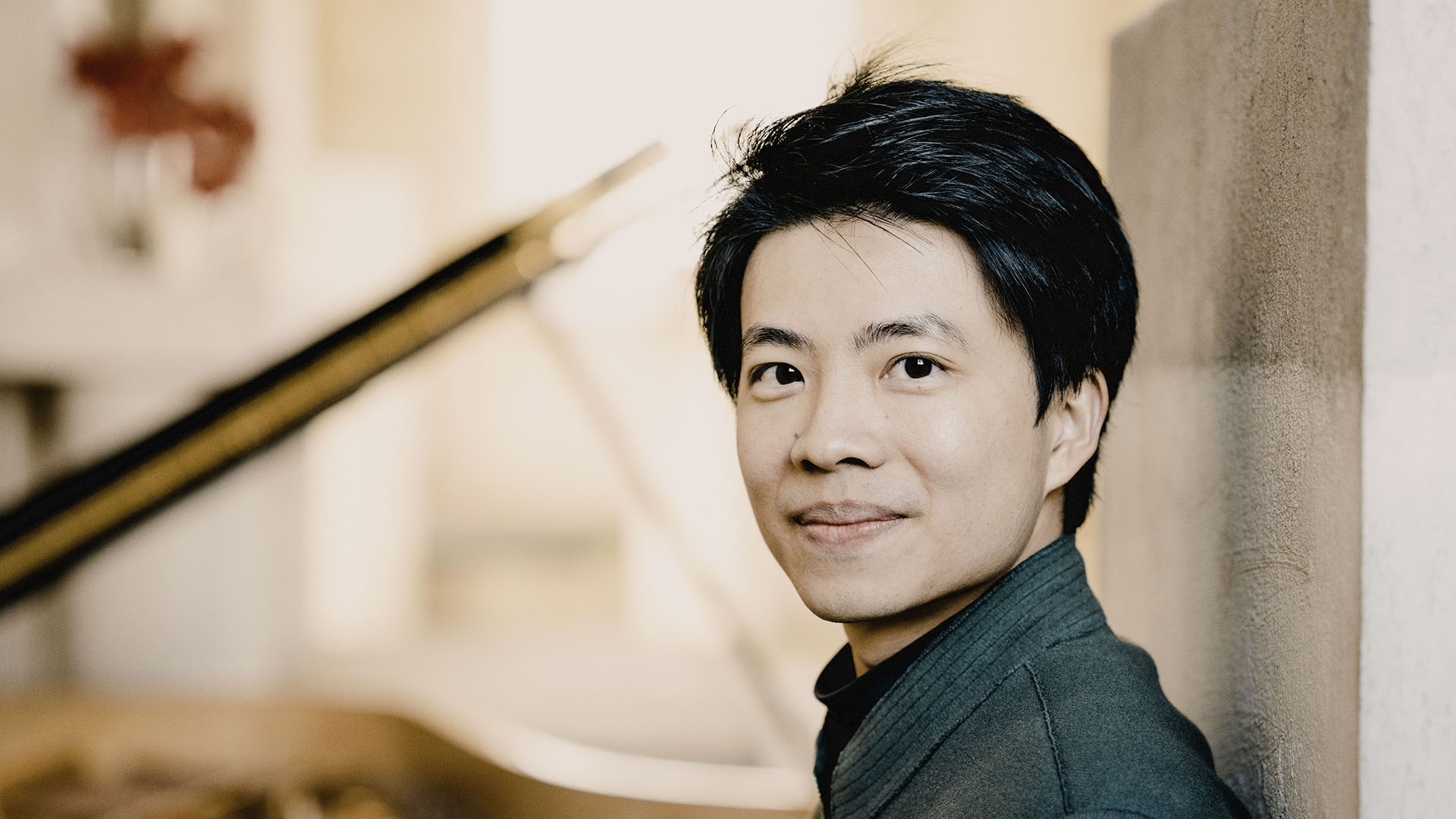Pietari Inkinen leads into the concert hall the sixteen swans from the Fifth Symphony of Jean Sibelius.
Kit Armstrong discovered his own calling – music and math – at the age of just 5. The young man has been a prodigy in both fields and was mentored at the age of 13 by none other than Alfred Brendel, who describes Armstrong’s playing as a combination of freshness and subtlety, emotion and intellect.
Pietari Inkinen leads into the concert hall the sixteen swans from the Fifth Symphony of Jean Sibelius, who recorded their flight over his home in his diary: “One of my greatest experiences! Lord God, that beauty!
Pietari Inkinen
The Finnish conductor Pietari Inkinen has been Chief Conductor of the Deutsche Radio Philharmonie since September 2017, where his contract has recently been extended until June 2025. He is also Chief Conductor of the Japan Philharmonic Orchestra and Music Director of the KBS Symphony Orchestra.
Recent and future highlights include his debuts with the Pittsburgh Symphony Orchestra, Royal Concertgebouw Orchestra, Gürzenich Orchestra, NDR Elbphilharmonie Orchester, SWR Symphony Orchestra and Budapest Festival Orchestra.
The music of Richard Wagner being of great significance to Pietari Inkinen’s work, he was invited to conduct Der Ring des Nibelungen at the Bayreuth Festival in 2023. Earlier, he led the tetralogy with great success at Opera Australia in Melbourne, for which he received the Helpmann Award in 2014 and the Green Room Award for Best Opera Conductor in 2016. Other opera productions have taken him to the Finnish National Opera, the Théâtre de la Monnaie, the Staatsoper Unter den Linden and the Bavarian State Opera.
www.pietariinkinen.com
Kit Armstrong
Described by the New York Times as a “brilliant pianist” who combines “musical maturity and youthful daring in his exceptional playing”, Kit Armstrong performs as a soloist with some of the world’s most famous orchestras while maintaining an active career as a recitalist and composer. Born in 1992, “Armstrong, the amazement-causing artist who can only be described as a musical phenomenon” (Süddeutsche Zeitung) appears today at major international venues such as the Vienna Musikverein, Amsterdam Concertgebouw, Berlin Philharmonie, Hamburg Elbphilharmonie and NHK Hall Tokyo. At the age of 5, Armstrong came to classical music through composition, and has developed a broad oeuvre of solo, vocal, chamber, and symphonic works. Armstrong has held artist-in-residence appointments offering a wide spectrum of musical formats, combining activities as composer, pianist, conductor, and organist, at institutions including the Mozartfest Würzburg, the Festspiele Mecklenburg-Vorpommern, the Musikkollegium Winterthur, and coming up in 2023, the Museumsgesellschaft Frankfurt.
www.kitarmstrong.com
Ludwig van Beethoven: Piano Concerto No. 2 in B-flat
Arriving in Vienna in his early twenties to study with Joseph Haydn, Ludwig van Beethoven (1770–1827) was full of optimism and ambition. Mozart had just died, leaving an enormous gap on the musical scene, but the “new Mozart” needed to be not just good but outstanding. Beethoven therefore set about composing music that would impress his audiences at concerts of his own and was soon a familiar figure with his unruly hair and black cape.
What better way to demonstrate one’s virtuosity than with a piano concerto? The B-flat concerto was ideal for this. Beethoven had probably composed the first movement at home in Bonn; the present second movement saw the light of day in Vienna, and the last notes of the finale were penned just in time for the first performance. The first-movement cadenza was not, however, noted down until 1809. Though numbered 2, the concerto was actually the first to be completed.
The B-flat concerto is still in the light, Viennese Classical style of Haydn and Mozart, but the three piano concertos that followed set off along a new track. The first two nevertheless display such novel, distinctive Beethoven features as hammering and broken octaves.
Jean Sibelius: Symphony No. 5 in E Flat Major, Op. 82
In his diary for April 1915, Jean Sibelius (1865–1957) reports that he has spent the evening working on his Fifth Symphony. It was, he said, as if God the Father had tossed pieces of mosaic down from heaven and set him the task of putting the pieces together. This proved to be no easy task, and one that kept the maestro busy for years. Even after the highly-acclaimed first performance in 1915, he was still not satisfied; he revised the Symphony and the third and final version was not premiered until 1919, by the HPO with Sibelius himself conducting.
One of the most popular works in the Sibelius repertoire, the Fifth Symphony sounds misleadingly “simple”. It is every musical analyst’s dream, being strictly logical in its construction. Originally casting it in four movements, Sibelius gradually warmed to the idea of combining the first two. Taking the lead in the finale is the magnificent “swan theme” on the brass, and the symphony culminates in six laconic blasts on the orchestra.

